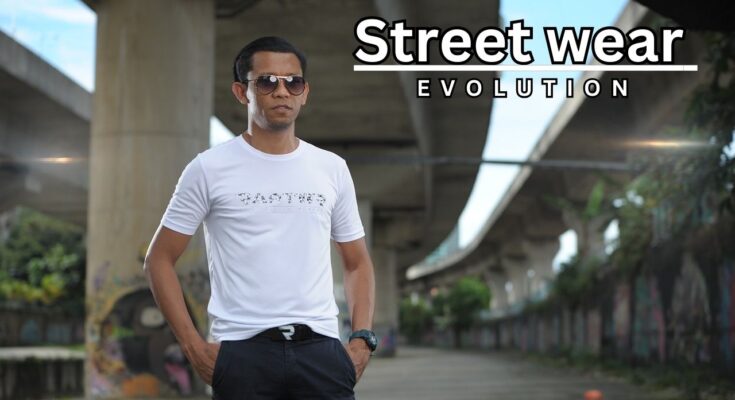Introduction
Over the last decade or so, as streetwear slowly broke through to the mainstream on its rise from the underground scenes of urban metropolises across the world, sparking a flurry of lusty collaboration manias with major fashion houses and major pop culture moments along the way.
From the jagged street to high profile runways, its evolution is an evidence regarding exactly how flexible and dynamic it can be.
A man with a clear vision to start the streetwear revolution This article is an in-depth look into streetwear, its beginnings, primary inspirations, big milestones and where is now in the fashion world.
Origins of Streetwear
Streetwear finds its roots in the skateboarding and hip-hop cultures of the late 1970s and early 1980s.
Emerging from the vibrant urban landscapes of cities like Los Angeles and New York, streetwear was initially characterized by its casual, comfortable, and often rebellious aesthetic.
Brands like Stüssy, founded by surfer Shawn Stüssy in 1980, played a crucial role in shaping the early streetwear landscape. Stüssy’s hand-drawn graphics and logo-centric designs became iconic, laying the foundation for what streetwear would evolve into.
Simultaneously, the rise of hip-hop culture brought a new wave of influence.
Artists like Run-D.M.C., with their bold Adidas tracksuits and sneakers, and brands like FUBU (For Us, By Us), which catered specifically to the African American community, showcased the symbiotic relationship between music and fashion.
These early influencers helped to cement streetwear’s association with self-expression, identity, and community.
Key Influences and Cultural Impact
As streetwear grew, it began to absorb and reflect a wide range of cultural influences.
The 1990s saw the rise of brands like Supreme, founded by James Jebbia in 1994.
Supreme’s model of limited releases, known as “drops,” and its collaborations with various artists and brands, from Nike to Louis Vuitton, set a new standard for exclusivity and desirability in fashion.
The skateboarding scene continued to be a significant influence, with brands like Thrasher and Palace Skateboards gaining prominence.
These brands not only catered to skaters but also became symbols of an anti-establishment ethos that resonated with a broader audience.
The influence of Japanese streetwear also cannot be overstated.
Brands like A Bathing Ape (BAPE), founded by Nigo in 1993, introduced a blend of high-fashion sensibilities with street culture, creating a unique aesthetic that gained a global following.
The meticulous craftsmanship and attention to detail in Japanese streetwear highlighted a fusion of luxury and casual wear that would later be emulated by many.
Streetwear and Luxury Fashion
The early 2000s marked a significant turning point as streetwear began to intersect with luxury fashion.
High-end designers started to take note of streetwear’s growing influence and its appeal to younger, fashion-forward consumers.
This crossover was epitomized by collaborations such as the 2000 partnership between Louis Vuitton and Supreme.
The collaboration was not only commercially successful but also symbolized the validation of streetwear within the luxury fashion world.
Designers like Virgil Abloh, founder of Off-White, further blurred the lines between streetwear and high fashion.
Abloh’s approach, combining elements of street culture with high-fashion design principles, earned him a historic appointment as the artistic director of Louis Vuitton’s menswear line in 2018.
His tenure marked a significant moment in fashion history, highlighting streetwear’s influence and its acceptance within the highest echelons of the industry.
Technological and Social Media Influence
The rise of social media and advancements in technology have also played a pivotal role in the evolution of streetwear.
Platforms like Instagram and TikTok have become essential tools for brands to reach a global audience.
Influencers and celebrities showcasing streetwear styles have amplified trends and driven demand in unprecedented ways.
The immediacy of social media has also allowed for real-time engagement with consumers, fostering a sense of community and loyalty.
E-commerce platforms and digital drops have revolutionized how streetwear is sold. Brands now leverage online exclusivity, countdowns, and virtual queues to create hype and anticipation.
This shift has democratized access to streetwear while maintaining its exclusive allure.
Current State of Streetwear
Today, streetwear is a multifaceted and global phenomenon. It encompasses a wide range of styles, from minimalist and utilitarian to bold and graphic-driven.
Major fashion houses continue to embrace and incorporate streetwear elements into their collections.
Brands like Balenciaga and Gucci have seamlessly integrated streetwear aesthetics, reflecting the enduring influence of this once-subcultural movement.
The sustainability movement has also impacted streetwear, with many brands adopting eco-friendly practices and materials.
Companies like Patagonia and Pangaia emphasize sustainable production methods, aligning with the values of a growing segment of conscientious consumers.
Moreover, streetwear has become a powerful platform for social and political expression.
Brands are increasingly using their influence to address issues such as racial inequality, climate change, and social justice.
Collaborations with artists, activists, and non-profits are common, reflecting the deeply intertwined nature of streetwear and contemporary cultural movements.
Conclusion
The evolution of streetwear from its humble beginnings to its current status as a global fashion powerhouse is a remarkable journey.
It has consistently pushed boundaries, challenged conventions, and redefined what fashion can be.
Streetwear’s ability to adapt and evolve, while staying true to its roots of self-expression and community, ensures its continued relevance and influence.
As we look to the future, streetwear is poised to further integrate with technology, sustainability, and cultural movements, continuing to shape and be shaped by the world around it.
Its story is far from over, and its impact on the fashion industry and popular culture is likely to grow even more profound in the years to come.





